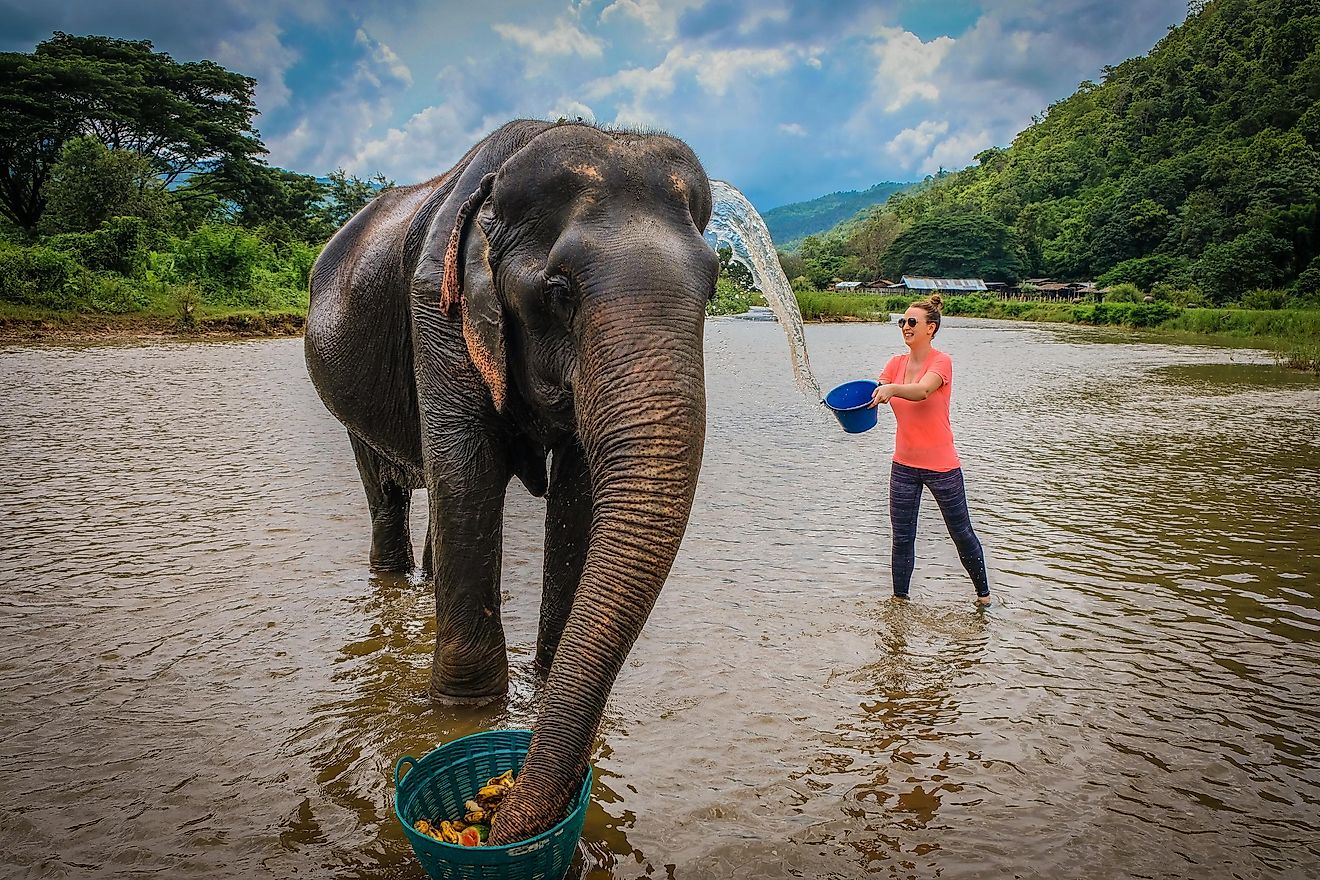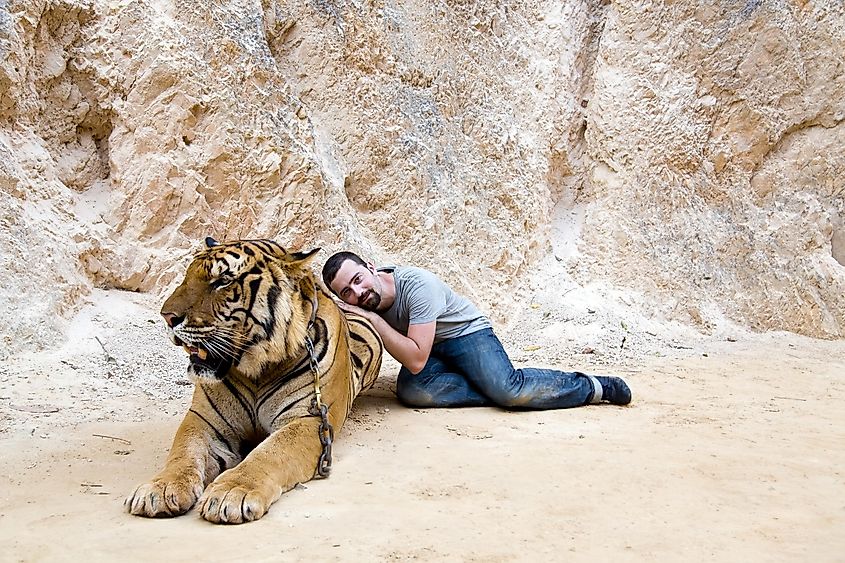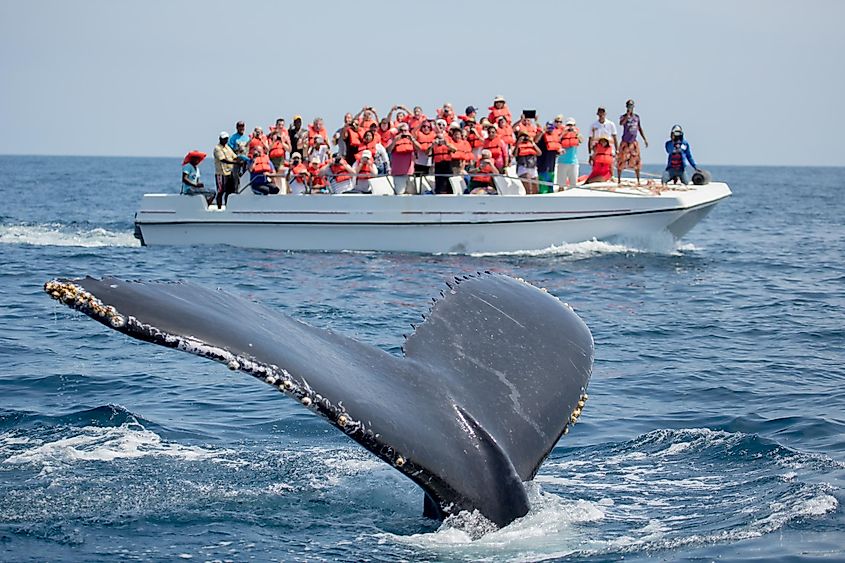How To Tell Which Animal Tourism Activities Are Ethical, And Which Are Exploitative

- Photos with tigers, elephant rides, and swimming with dolphins in captivity are just some of the animal tourism experiences that are truly unethical.
- Tiger photos are a large counter-culture industry in the US, and by refusing to support it, you help to protect the wellbeing of these wildcats.
- Elephants who are trained to listen to humans do so because they have been beaten into submission. from a young age.
Is visiting the local zoo actually OK to do? Most of us have been taught to think that zoos are places that educate the public about wild animals and help to conserve species that may be endangered for future generations on Earth. Many zoos do these things, but some also do house animals in conditions that are far from ideal. When you really think about it, some zoos are places that basically put a bunch of animals behind bars and charge you an entrance fee to see them. Is there more to it, though? What is ethical and what is not, when it comes to animal tourism?
According to Allé Travel, the goal of exploring the globe as an ethical animal tourist is to ensure that you do enjoy wild animals as close as you can get, but that you do so while ensuring that you are supporting the ethical treatment of the animals, above everything else. You want to look for places that seek to increase awareness about conservation efforts and raise funds used to protect animals in the wild, without hurting the creatures. If you truly want to enjoy animals ethically, you should also search for places in which you can witness these wild animals in an environment that is very close to their natural habitat. No cages, no ropes, no tricks, and no trainers. You are simply looking for living conditions that do not take away from the animal’s welfare.
Here is a brief look at what else you should be avoiding, and what you should be doing, when it comes to ethical animal tourism.
What is Not OK
As stated above, generally speaking, cages and tricks are things you should avoid when seeking out a moment up close with wild animals. Allé has a list of specific animal encounters that you may come across when travelling abroad, but that should never be supported with your dollar. These include photos with tigers, walking with tigers, riding on elephants, swimming with dolphins in captivity, taking in bear parks, handling sea turtles, witnessing snake charming, and paying to see a monkey do tricks. These are just some of the few activities with animals that truly are unethical.

The reasons these activities are unethical are multifaceted. Tigers, for example, are obviously dangerous wildcats. Many adult tigers need to be drugged, tranquillized and often declawed in order to allow for strangers to snap selfies with them. When a tiger in captivity grows to be too big for photo opportunities, they can often progress to being held in captivity for tourists to walk with them. They can be kept in barren cages and fed poorly while being chained in place. Older tigers are sold into the canned trophy hunting business where they are killed in the name of sport.
Elephants, for their part, are extremely social animals. Those that are trained to do as humans say, such as provide people with rides, are taken from their parents at a young age and beaten into submission. This is done so that they will listen and respond to humans, not other elephants. Elephants can be restrained with ropes and chains, whipped and kept in small cages. If you encounter an elephant ride and it looks sublime, whether in North America, India or Sri Lanka, say “no thanks.” That animal has suffered to get where it is.
What Is OK
Some animal tourism is ethical, however. Look for experiences that put you in contact with wild animals in their natural environment. Whale watching, for instance, does not involve placing animals in captivity but viewing them from afar. Ask yourself, “who is benefiting”? If the answer to that is only the humans, look elsewhere. Whale watching or bird watching is something that can increase your appreciation of these animals without harming them. In this way, it can be a win-win situation, to a certain extent. Just because riding elephants is unethical does not mean that you need to cross an elephant encounter off your bucket list: many tourist attractions involving elephants are run out of sanctuaries that prioritize their wellbeing, with feeding and bathing these majestic creatures on the schedule instead of a stroll.

Do your research before entering an establishment or paying for an experience. Look for transparency, and places that will tell you all you wish to know about how the animals are treated, and how humans interact with them. If in doing so you find out some information that you would rather not, as the animal rights advocates say, vote with your feet and don’t go. That is one tourist experience better left unsupported.











